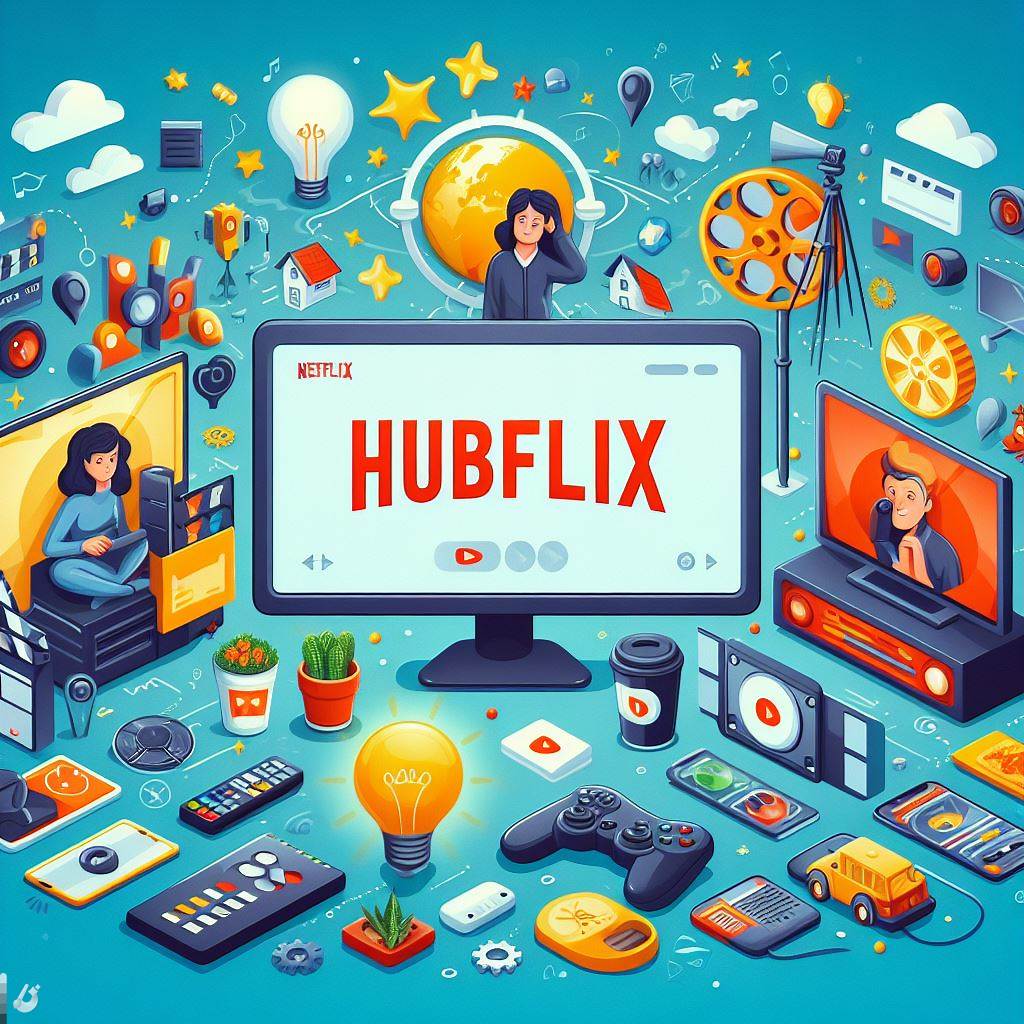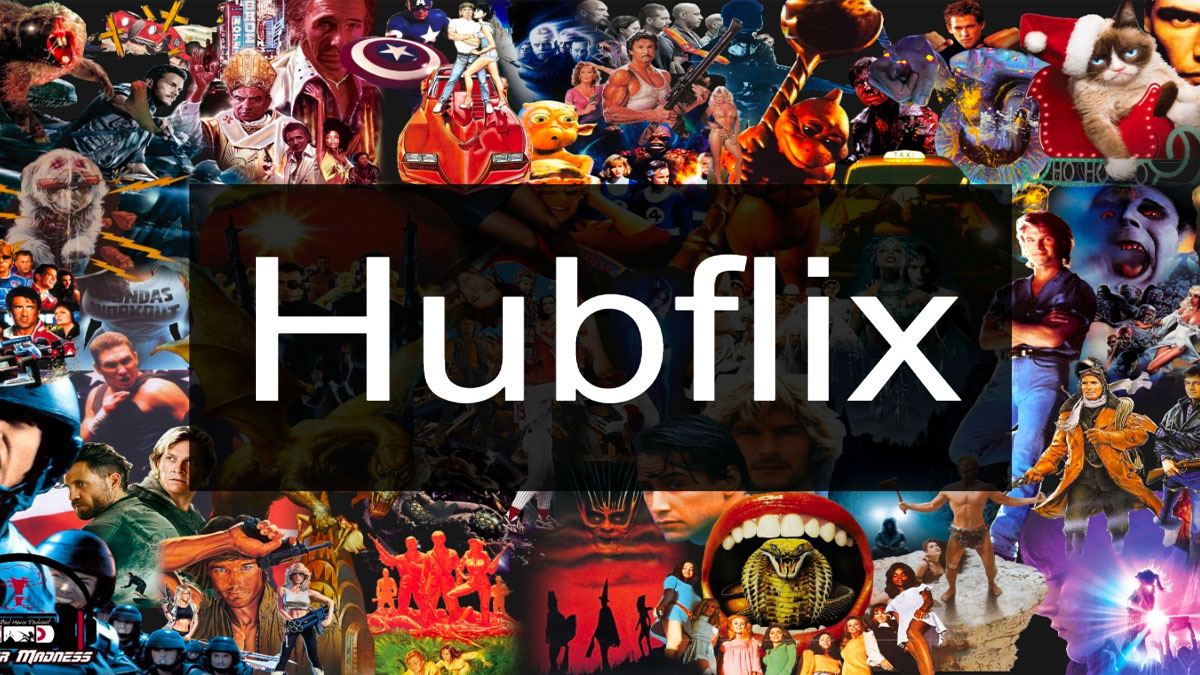Is hubflix the future of entertainment, or just another fleeting trend in the ever-evolving digital landscape? The consistent buzz and rapid expansion of hubflix across various platforms suggest a fundamental shift in how we consume media, potentially reshaping the industry in ways we're only beginning to understand.
The term "hubflix" itself, while not a formally recognized industry term, has emerged organically to describe the phenomenon of content aggregation and discovery platforms. These hubs aim to curate and present a wide array of entertainment options, often encompassing movies, television shows, documentaries, and even live events. This represents a departure from the traditional model of individual streaming services, each offering its own siloed library. Instead, hubflix platforms strive to be a one-stop shop, simplifying the user experience and providing a more comprehensive entertainment ecosystem.
The concept's appeal is undeniable. In a world saturated with content, the ability to navigate and filter through the noise is invaluable. Hubflix platforms leverage sophisticated algorithms, user reviews, and curated recommendations to guide viewers toward relevant and engaging content. This personalized approach saves time and eliminates the frustrating experience of endless scrolling through multiple services, ultimately leading to a more satisfying viewing experience. Furthermore, the potential for discovery is greatly enhanced. Viewers are exposed to content they might not have otherwise encountered, expanding their tastes and broadening their horizons.
- Missing Results Finding Your Movies Series With Justwatch More
- Vegamovies Nl 2025 Your Guide To Free Streaming 4k Movies
The driving force behind hubflix's potential success lies in its ability to address the core frustrations of modern media consumption. Consider the "streaming fatigue" that many viewers experience. With subscriptions to numerous platforms becoming increasingly expensive, and the need to constantly switch between apps, the convenience of the traditional cable package, albeit with its own shortcomings, starts to look appealing. hubflix offers a solution: a unified interface, a single bill, and a consolidated library. This simplicity is a major selling point in a world where consumers value convenience above all else.
The economic implications are also significant. By aggregating content, hubflix platforms can negotiate more favorable deals with content providers. This could potentially lead to lower subscription costs for consumers, or at least, more perceived value for their money. Furthermore, the potential for advertising revenue is substantial. A centralized platform can offer advertisers a more targeted and efficient way to reach their desired audience, leading to increased monetization opportunities.
However, the rise of hubflix is not without its challenges. The legal and regulatory landscape surrounding content licensing is complex, and securing rights to a vast and diverse library of content is a significant hurdle. Furthermore, the success of hubflix depends on the platform's ability to curate and recommend content effectively. If the algorithms are flawed, or the recommendations are off-base, viewers will quickly lose interest. Moreover, the platform must consistently update its library with fresh and compelling content to keep users engaged.
Another potential obstacle is the issue of content exclusivity. As streaming services continue to invest heavily in original programming, they are increasingly reluctant to license their content to third-party platforms. This creates a fragmented landscape, where viewers may still need to subscribe to multiple services to access all the content they desire. hubflix platforms must find a way to navigate this complex environment and secure access to a broad range of content, including both licensed and original programming.
Despite these challenges, the potential of hubflix is undeniable. By offering a simplified, personalized, and comprehensive entertainment experience, these platforms are poised to disrupt the traditional media landscape. They represent a significant step towards a more efficient and user-friendly way to consume media, and their success will depend on their ability to adapt to the evolving needs and expectations of viewers.
The evolution of technology has always been intrinsically linked to the way we experience entertainment. From the advent of cinema to the rise of television, each innovation has fundamentally reshaped the industry. Now, hubflix platforms are poised to initiate the next major transformation, ushering in a new era of content aggregation and discovery. The ultimate success of hubflix will depend on its ability to overcome the hurdles of content licensing, algorithm refinement, and competition from established players. However, the underlying trend is clear: consumers are demanding a more convenient, personalized, and comprehensive entertainment experience, and hubflix platforms are attempting to provide it. The question is, can they deliver?
The allure of a single platform offering access to a vast library of movies, TV shows, and more, is a compelling proposition. Consider the frustrations of juggling multiple subscriptions, each with its own interface, content library, and cost. Hubflix offers a solution, simplifying the viewing experience and potentially saving consumers both time and money. This convenience factor is a major advantage in today's fast-paced world, where consumers value ease of use above all else.
But the picture isn't entirely rosy. The legal and financial complexities of aggregating content are considerable. Licensing deals, royalty payments, and content rights can be a minefield. Furthermore, competition within the entertainment industry is fierce. Established streaming services like Netflix, Amazon Prime Video, and Disney+ have already invested billions in original content and have loyal subscriber bases. Hubflix platforms face an uphill battle in attracting and retaining viewers, especially when they have to contend with platforms that may offer exclusive content.
Moreover, the success of hubflix will depend on the quality of its recommendation algorithms. The ability to accurately predict what viewers will enjoy is crucial. If the platform consistently suggests irrelevant or unappealing content, users will quickly lose interest and seek entertainment elsewhere. Therefore, a well-curated library, coupled with sophisticated algorithms, is essential for the long-term viability of any hubflix platform.
The business model is also critical. How will hubflix platforms generate revenue? Will they rely on subscription fees, advertising, or a combination of both? The pricing strategy must be attractive to consumers without sacrificing profitability. Finding the right balance will be crucial for survival in the highly competitive streaming market.
The rise of hubflix has profound implications for the entertainment industry as a whole. Content creators, distributors, and viewers all stand to be affected. If hubflix platforms succeed, they could reshape the power dynamics of the industry, giving consumers more control over their viewing choices. This shift could lead to greater diversity in content, as platforms cater to a wider range of tastes and preferences.
One of the key benefits of hubflix is the potential for content discovery. By aggregating content from multiple sources, these platforms expose viewers to a broader range of options. This can be particularly beneficial for independent filmmakers, documentarians, and creators of niche content who may not have had the same opportunities for distribution under the traditional model. Hubflix platforms have the potential to democratize content creation and give a voice to a wider range of storytellers.
The ongoing debate revolves around the future. Will hubflix platforms revolutionize the way we consume media, or will they succumb to the same challenges that have plagued the industry for years? The answer is complex and depends on a variety of factors, including licensing agreements, technological advancements, and, most importantly, the ever-changing preferences of viewers. What remains certain is that the industry is in a state of flux, and hubflix is a key player in the ongoing transformation.
The allure of hubflix is undeniable. The prospect of a single platform that provides access to a vast library of movies, TV shows, and other forms of entertainment is a compelling proposition. The potential for convenience and cost savings are significant, and the benefits of a more personalized viewing experience are appealing. However, it is essential to approach the concept with a degree of realism, acknowledging the challenges and uncertainties that lie ahead. The success of hubflix will depend on its ability to navigate these complexities and provide a truly exceptional entertainment experience.
Hubflix presents a fascinating case study in the evolving landscape of media consumption. Its long-term impact is still unknown, but the platform has the potential to reshape the entire entertainment industry.


